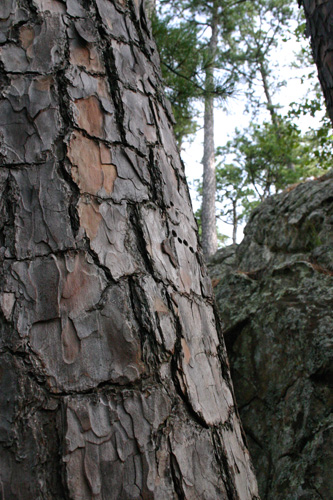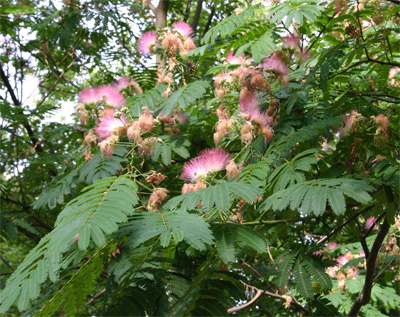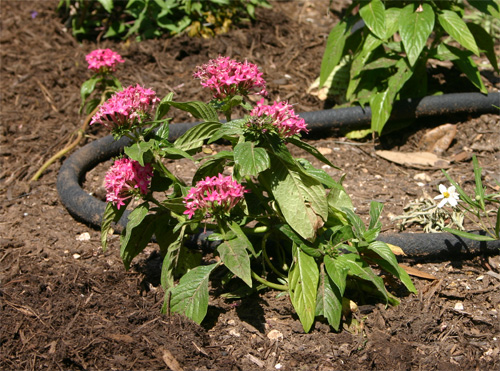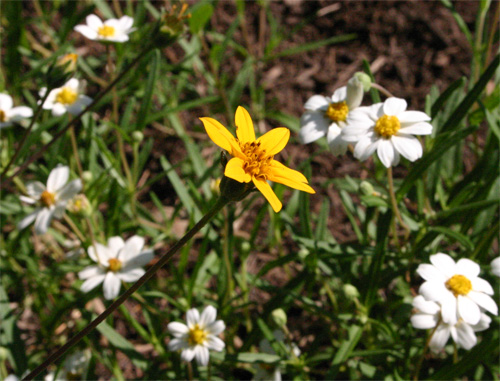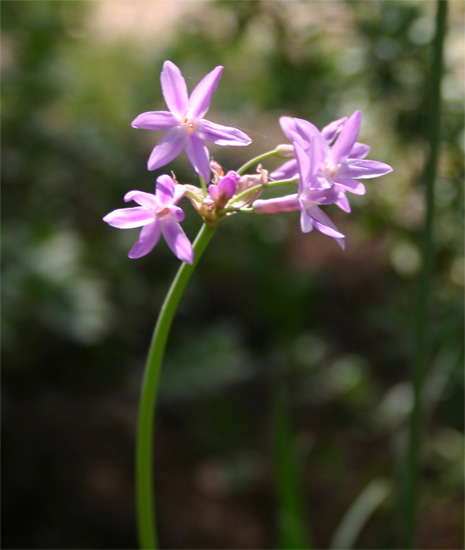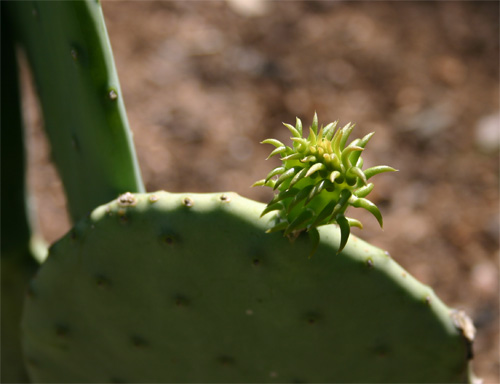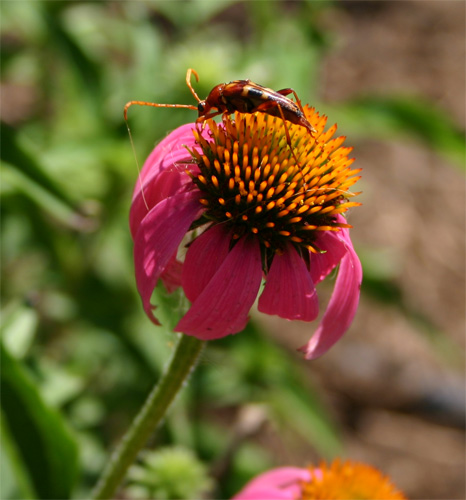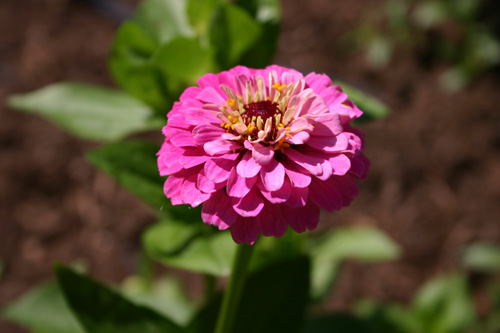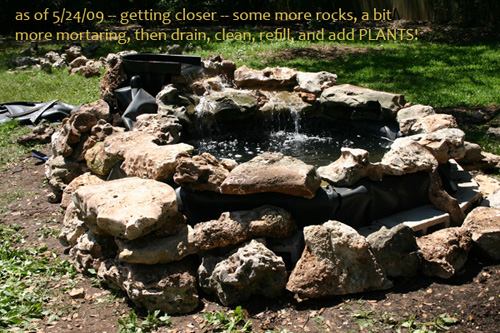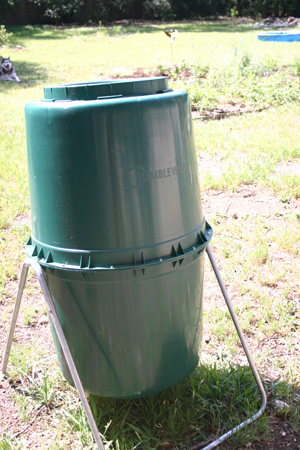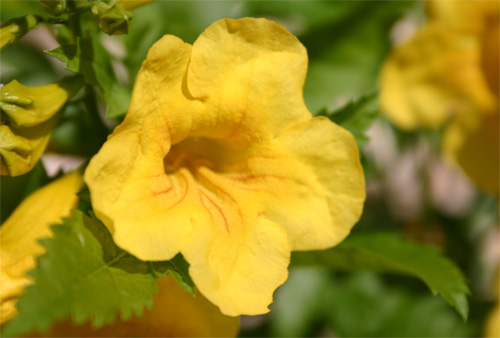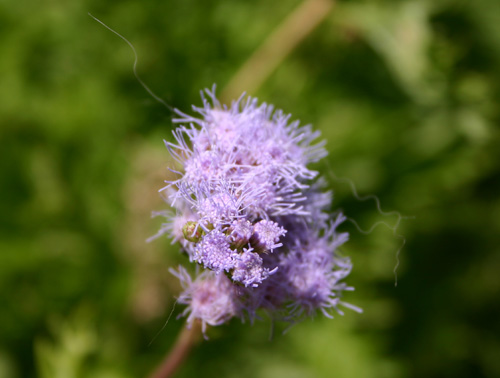Gardening is still such a mystery to me. What should work doesn’t, and what shouldn’t work does. I know there are all sorts of Murphy’s Laws when it comes to this crazy hobby. Here’s what I’ve discovered about the way gardening works. Gardening gods, why do you forsake me?!!
*Why is it that you promise yourself most determinedly that this time you will not buy any plants, and when you get to the nursery you realize that not just one, but two of your most coveted hard-to-find plants have just arrived off the truck? (here is more Dutchman’s Pipevine — the other, non-pictured is a native milkweed I rarely see)
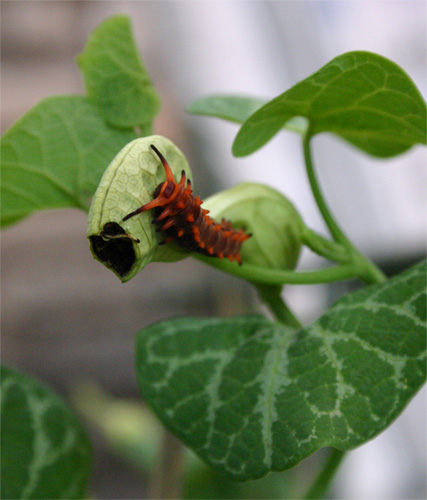 *Why is it that you wait so long for the first monarch of the season, and when you finally see one you discover all your milkweed is covered in aphids?
*Why is it that you wait so long for the first monarch of the season, and when you finally see one you discover all your milkweed is covered in aphids?
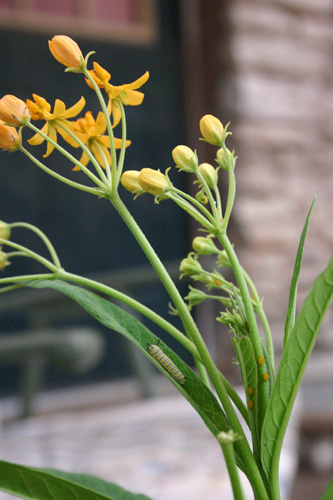
 *On the same note, why is it that ladybugs show up when there aren’t any aphids and leave before the ferocious onslaught of the little sap-suckers?
*On the same note, why is it that ladybugs show up when there aren’t any aphids and leave before the ferocious onslaught of the little sap-suckers?
*Why is it that your darling dogs have an impelling need to lay on and compact any dirt you till, and another impelling need to dig up any freshly planted garden bed? (This photo, by the way, is of the naughty dog that keeps getting in the pond. She’s usually camera-shy. Don’t be fooled by her gorgeous fur. It hides an imp.)
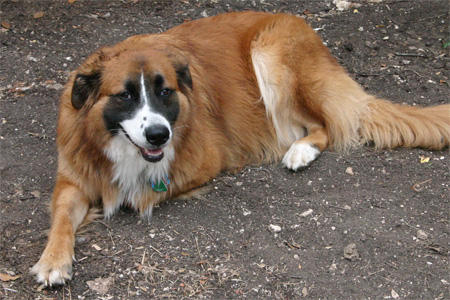 *And why is it that your yard can have plenty of available (dog) fertilizer but you can’t use one bit of it to make compost?
*And why is it that your yard can have plenty of available (dog) fertilizer but you can’t use one bit of it to make compost?
*Why is it that the bag that spills in the car is not the bag of pine straw, and not even the pleasant smelling potting soil, but the compost made from cow manure?
*Why is that you set out birdfeeders for hummingbirds and cardinals and what you get instead are gluttonous, wasteful doves and predatory wasps? (Ok, really, I get them all.)
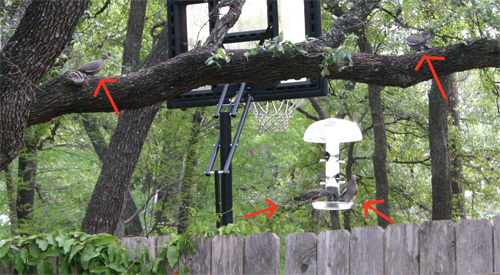
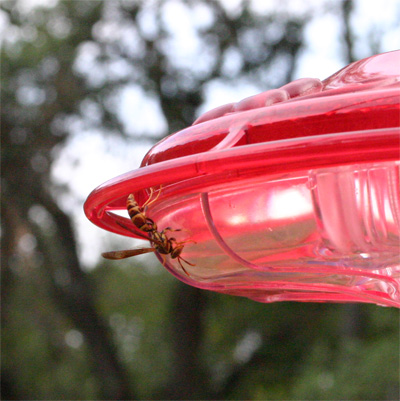
*Why is it that the pond you enjoy so much attracts, among other creatures, hornets and wasps that take a nice long, happy drink before going and killing your beloved caterpillars? (Sad note: the monarch caterpillar in the milkweed picture above, along with all its buddies, disappeared during the writing of this blog entry. Stupid, but necessary predators.)
*Why is that you attempt to sacrifice yourself to the gods for some rain by putting up a metal trellis while standing on a partially metal ladder with wire cutters and a hammer in your hand and thunder and lightning in the distance, and all you get is a few sprinkles, like a spit in the eye?
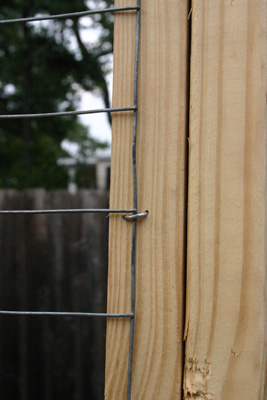 *Why is it that you don’t realize you have to stop at the grocery store on the way home until after you’ve covered yourself in stinky compost while bagging it at the nursery?
*Why is it that you don’t realize you have to stop at the grocery store on the way home until after you’ve covered yourself in stinky compost while bagging it at the nursery?
*Why is it that you buy a beautiful tree that you are determined to keep alive because it needs to shade the A/C unit and because it is replacing one that died, and it dies while the one that the dogs dug up multiple times over the winter is the one that is thriving? (Actually, three trees the dogs mostly destroyed came back and are doing well.)
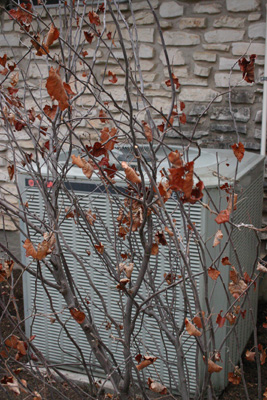
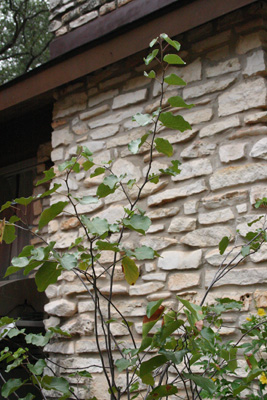 *Why is it that the young trees you rarely water (including two you forgot about for weeks in your garage after the last frost) survive, but the ones you faithfully water on a recommended schedule die?
*Why is it that the young trees you rarely water (including two you forgot about for weeks in your garage after the last frost) survive, but the ones you faithfully water on a recommended schedule die?
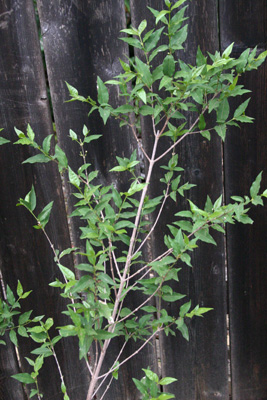 *Why is it that the plants you still haven’t managed to put mulch around are doing better than the ones you surrounded with three inches of mulch?
*Why is it that the plants you still haven’t managed to put mulch around are doing better than the ones you surrounded with three inches of mulch?
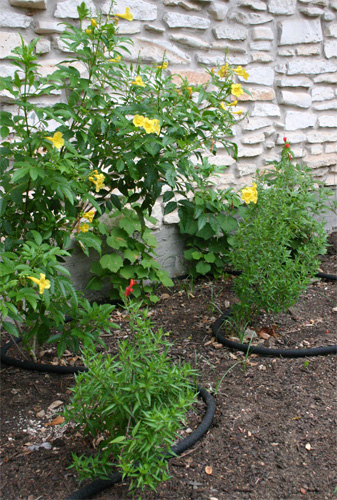
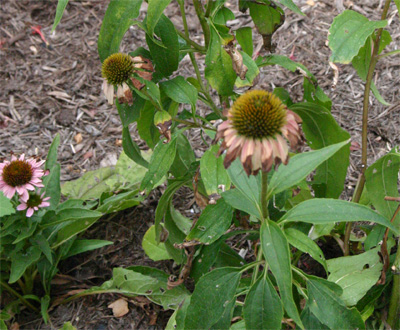
*Why is it that the most amazing, beautiful sights in your garden happen when your camera is nowhere near?
*Why is it that a random new seedling grows in your yard and you have to wait until it gets big to find out what it is, or whether it is friend (keeper) or foe (weed or invasive)? This one looks like a friend, I hope, but I don’t know what it is yet.
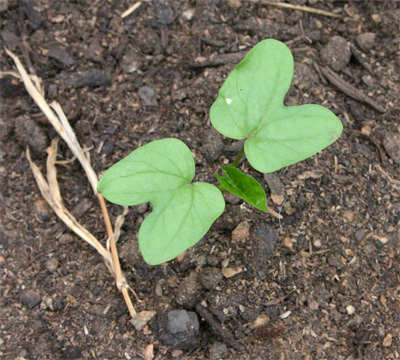 *Why is it that your son doesn’t want to work outside when it’s hot, but then when it’s cool and overcast, he still doesn’t want to work? Oh wait, I know that one.
*Why is it that your son doesn’t want to work outside when it’s hot, but then when it’s cool and overcast, he still doesn’t want to work? Oh wait, I know that one.
*(from the son) Why is it that your mom always makes you work, but barely ever lets you goof around? Oh wait, I know that one. (from the Mom: clearly I just let him goof around)
*Why is it that your beautiful plants take so long to grow, but your weeds grow like… well, weeds?
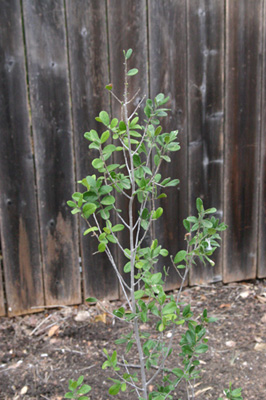 *(from the other son) Why is it that every time you want to plant something, your mom doesn’t have a plant to plant? But when you don’t want to plant something, she has lots and lots.
*(from the other son) Why is it that every time you want to plant something, your mom doesn’t have a plant to plant? But when you don’t want to plant something, she has lots and lots.
*Why is it that you lovingly make several cost-effective environmentally-friendly thistle socks for the birdies, and the finches tear such big holes in them until the socks won’t hold any more seed, making you want to reconsider plastic? (technically these two are the brand-name socks — I’d already removed the destroyed homemade ones… I guess I better get busy making more)
 *Why is it that you work so hard to create a great garden for your new veggies and then realize that you managed to let some of your herbs die in the process?
*Why is it that you work so hard to create a great garden for your new veggies and then realize that you managed to let some of your herbs die in the process?
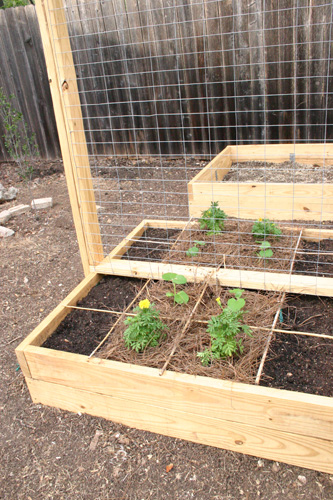
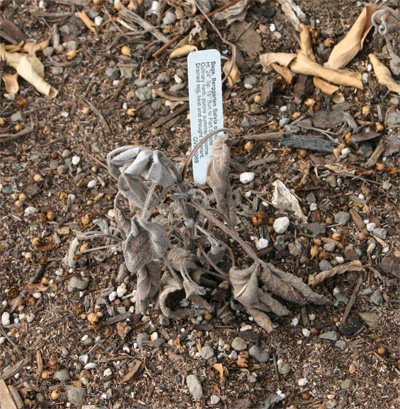 *Why is it that you can spend so much time making your outside yard beautiful and neglect your poor house plants?
*Why is it that you can spend so much time making your outside yard beautiful and neglect your poor house plants?
*(from the husband) Why is it that dinner isn’t ready yet? Oh wait, I know that one.
Got any to add? Please share them! I have a feeling this is a non-ending list!
Author’s edit on 7/26/09: How could I forget this major one: Why is it that I finally start gardening, and Texas finds itself in the middle of perhaps its worst drought ever, with drastically reduced water availability and temperatures over 100 degrees all summer long?
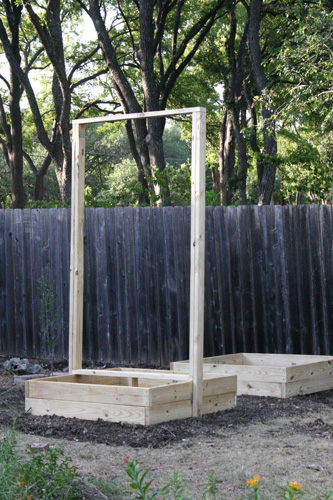
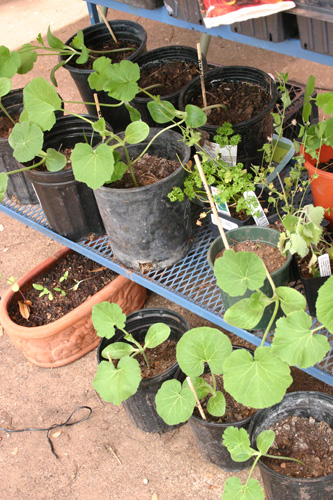 And of our three swallowtail caterpillars happily munching away before we left, we found one chrysalis, so we’ll try to monitor it for butterfly-ness. Of course, it’s in a place that is very hard to get a picture, and it’s also in a place that the butterfly will have a hard time getting out of without our help.
And of our three swallowtail caterpillars happily munching away before we left, we found one chrysalis, so we’ll try to monitor it for butterfly-ness. Of course, it’s in a place that is very hard to get a picture, and it’s also in a place that the butterfly will have a hard time getting out of without our help. 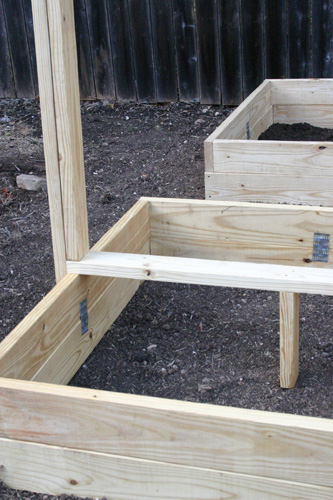
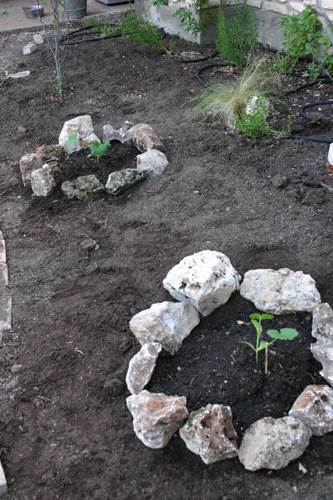 The cantaloupes will be in a raised garden bed, grown vertically on a trellis. All in all, we’ll have three raised veggie beds (for now, haha). The cantaloupes will be in one, along with corn and some marigolds, and sugar pumpkins will be in another, with some more corn. The third bed will be prepared for yummy fall planting goodness. The third bed was made for me by my kids this weekend, their first project working with drills and saws and whatnot!
The cantaloupes will be in a raised garden bed, grown vertically on a trellis. All in all, we’ll have three raised veggie beds (for now, haha). The cantaloupes will be in one, along with corn and some marigolds, and sugar pumpkins will be in another, with some more corn. The third bed will be prepared for yummy fall planting goodness. The third bed was made for me by my kids this weekend, their first project working with drills and saws and whatnot!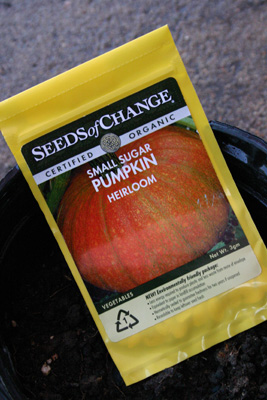 To prepare the area, we dug out the grass. It was dead, so other than dealing with the hard soil, it was no loss and only somewhat of a pain. Then, with the frames in place, I mixed in compost into the existing soil. I expect some plant roots to extend into that soil, so I wanted to enrich it somewhat. How hard was the soil? Casualty, one shovel.
To prepare the area, we dug out the grass. It was dead, so other than dealing with the hard soil, it was no loss and only somewhat of a pain. Then, with the frames in place, I mixed in compost into the existing soil. I expect some plant roots to extend into that soil, so I wanted to enrich it somewhat. How hard was the soil? Casualty, one shovel.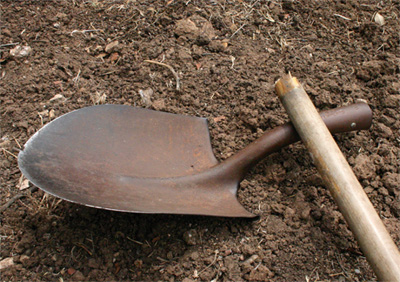
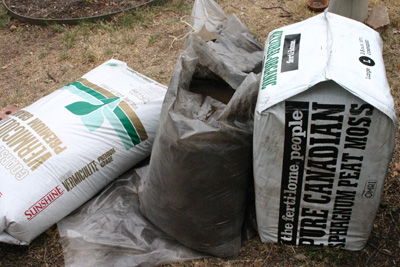
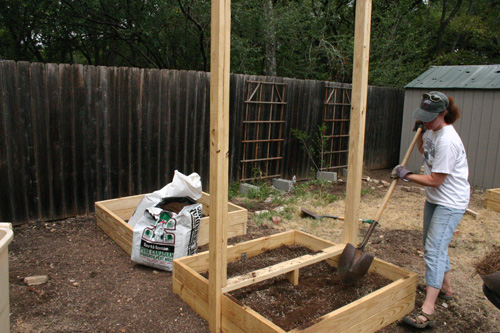
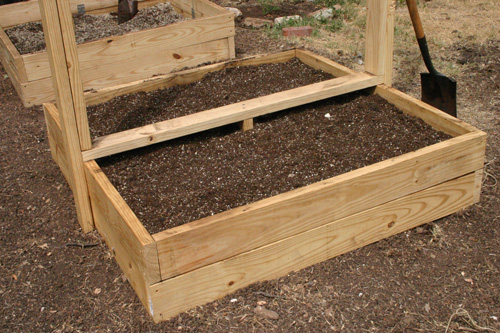 Because someone at NG told me that peat moss can be a pain to get wet at first, I decided to wet down the soil well and plant tomorrow. Sure enough, I had to work with the peat moss in a big soup of mud to get it to soak in the water. Then I really did feel I was creating a magical potion! Tomorrow will be a good planting day. First I’ll get the trellis wires in place and the grid. Then in will go the cantaloupes and marigolds and some corn seeds.
Because someone at NG told me that peat moss can be a pain to get wet at first, I decided to wet down the soil well and plant tomorrow. Sure enough, I had to work with the peat moss in a big soup of mud to get it to soak in the water. Then I really did feel I was creating a magical potion! Tomorrow will be a good planting day. First I’ll get the trellis wires in place and the grid. Then in will go the cantaloupes and marigolds and some corn seeds.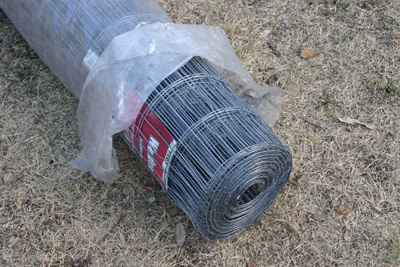 Side story… While I was digging the soil for the frames, I found a weird, soft little tube. At first I thought that it was, pardon me, some old dog poop. But then it split open, and a spider carcass fell out. Squeal. And then lots of little spiders came out and crawled over the spider carcass. Shriek! While I was wondering whether they had eaten the spider, more horrors awaited me… the legs of a gigantic spider appeared. And they MOVED. And more baby spiders crawled out and over the legs… By now, I’d made loud enough noises that the kids came running over. And finally the whole spider slid out, and it was the biggest spider I’d ever seen in my yard. Yes, tarantulas are even bigger, but I haven’t seen one as a resident yet. Despite my startled reaction to the sudden appearance of this spider and her babies, I find her beautiful. Can you see some of her babies in this picture?
Side story… While I was digging the soil for the frames, I found a weird, soft little tube. At first I thought that it was, pardon me, some old dog poop. But then it split open, and a spider carcass fell out. Squeal. And then lots of little spiders came out and crawled over the spider carcass. Shriek! While I was wondering whether they had eaten the spider, more horrors awaited me… the legs of a gigantic spider appeared. And they MOVED. And more baby spiders crawled out and over the legs… By now, I’d made loud enough noises that the kids came running over. And finally the whole spider slid out, and it was the biggest spider I’d ever seen in my yard. Yes, tarantulas are even bigger, but I haven’t seen one as a resident yet. Despite my startled reaction to the sudden appearance of this spider and her babies, I find her beautiful. Can you see some of her babies in this picture?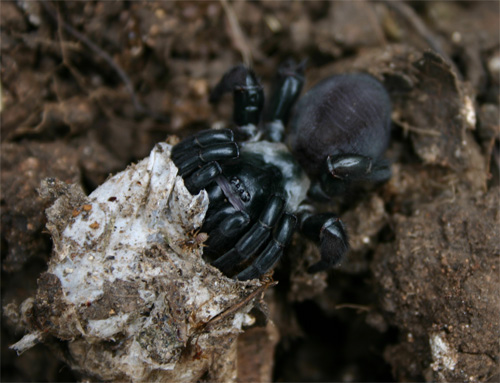
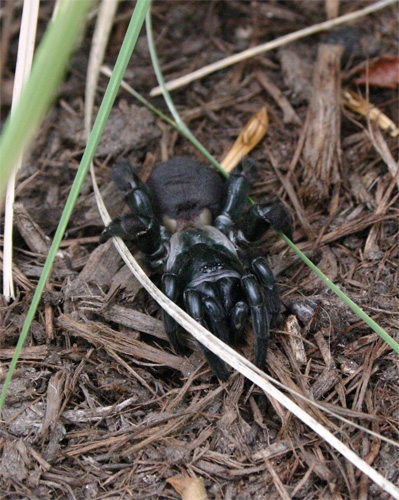
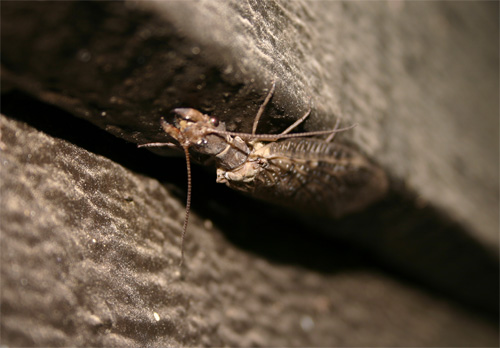
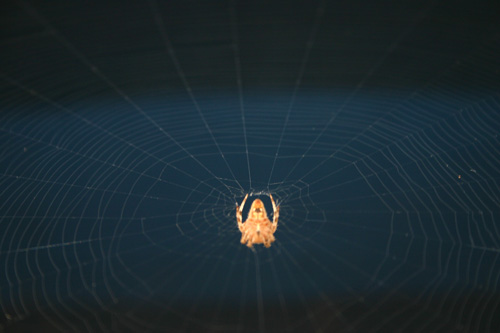
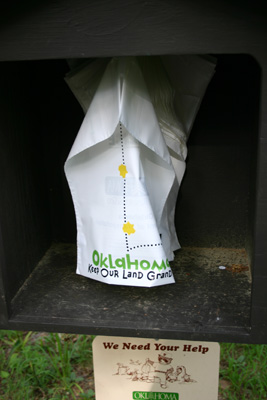 I loved the bark of the pine trees at Robber’s Cave.
I loved the bark of the pine trees at Robber’s Cave.